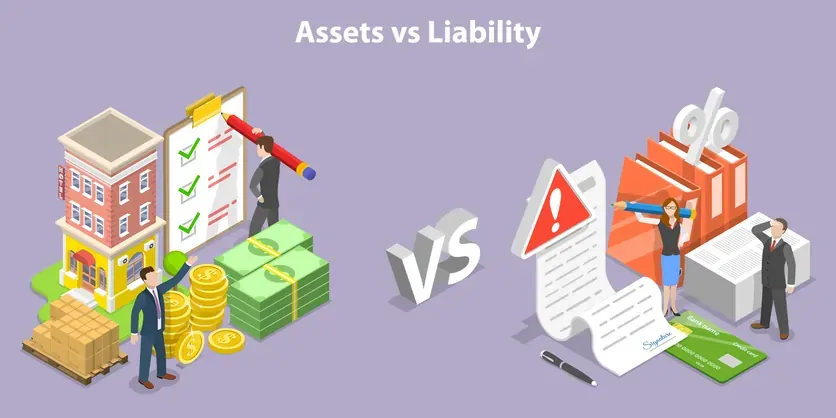
Assets v/s liabilities v/s equity
In the complex realm of finance, three fundamental elements play a crucial role in defining the financial health of any entity – be it an individual, a business, or even a nation. These elements are assets, liabilities, and equity. In this comprehensive guide, we will delve into the intricacies of assets, liabilities, and equity, unraveling their significance and the impact they have on financial stability.
Defining assets, liabilities, and equity
Assets: The building blocks of wealth
Assets are the cornerstone of financial success. In essence, assets are resources owned by an individual or a business that possess economic value. Examples of assets include real estate, investments, cash, and valuable possessions. Assets are typically classified into two categories: current assets, which can be converted into cash within a year, and non-current assets, representing long-term investments.
Liabilities: The financial obligations
On the flip side, liabilities represent financial obligations or debts owed by an individual or a business. This includes loans, mortgages, and any outstanding financial commitments. Liabilities are crucial in determining the financial leverage of an entity, as excessive liabilities can lead to financial strain. It’s essential to manage and monitor liabilities carefully to maintain a healthy financial standing.
Equity: The residual interest in assets
Equity is the residual interest in the assets of an entity after deducting liabilities. It serves as a measure of the owner’s or shareholders’ stake in the business. Positive equity indicates financial health, while negative equity raises red flags. For businesses, equity is often represented by shares, and its value fluctuates based on the company’s performance.
The interplay between assets, liabilities, and equity
Understanding the relationship between assets, liabilities, and equity is crucial for making informed financial decisions. The balance sheet is a key financial statement that provides a snapshot of this relationship. The equation “Assets = Liabilities + Equity” is the foundation of accounting, emphasizing the need for a balance between what is owned and what is owed.
Striking the Balance: The balance sheet
The balance sheet is a comprehensive financial statement that outlines an entity’s assets, liabilities, and equity at a specific point in time. Analyzing the balance sheet helps in assessing the financial health of an entity and making informed decisions. It is a critical tool for investors, creditors, and management alike.
Financial health indicators
Ratios derived from the interplay of assets, liabilities, and equity provide valuable insights into an entity’s financial health. The debt-to-equity ratio, for example, measures the proportion of debt used to finance assets. A lower ratio suggests a lower financial risk, while a higher ratio indicates higher risk.
Practical applications and strategies
Building wealth: Asset management strategies
Effective asset management is crucial for individuals and businesses alike. Diversification, the spread of investments across different asset classes, helps mitigate risks. Understanding the risk-return tradeoff is key to making informed decisions in building and preserving wealth.
Liability management: Mitigating financial risks
Proactive liability management involves strategic planning to reduce financial risks. This includes paying down high-interest debts, negotiating favorable loan terms, and avoiding unnecessary debt. A healthy debt-to-equity ratio is a key indicator of effective liability management.
Equity financing: Fueling business growth
For businesses, equity financing is a powerful tool for growth. Issuing shares allows companies to raise capital without incurring debt. However, dilution of ownership and the obligation to shareholders must be carefully considered.
In conclusion, understanding the dynamics of assets, liabilities, and equity is essential for making informed financial decisions. Whether you are an individual managing personal finances or a business striving for growth, a balanced approach to assets, liabilities, and equity is key to long-term financial success. Regularly assessing your financial statements, employing effective management strategies, and staying informed about market trends will contribute to a solid financial foundation. By mastering the concepts of assets, liabilities, and equity, you empower yourself to navigate the intricate world of finance, laying the groundwork for a secure and prosperous financial future.


